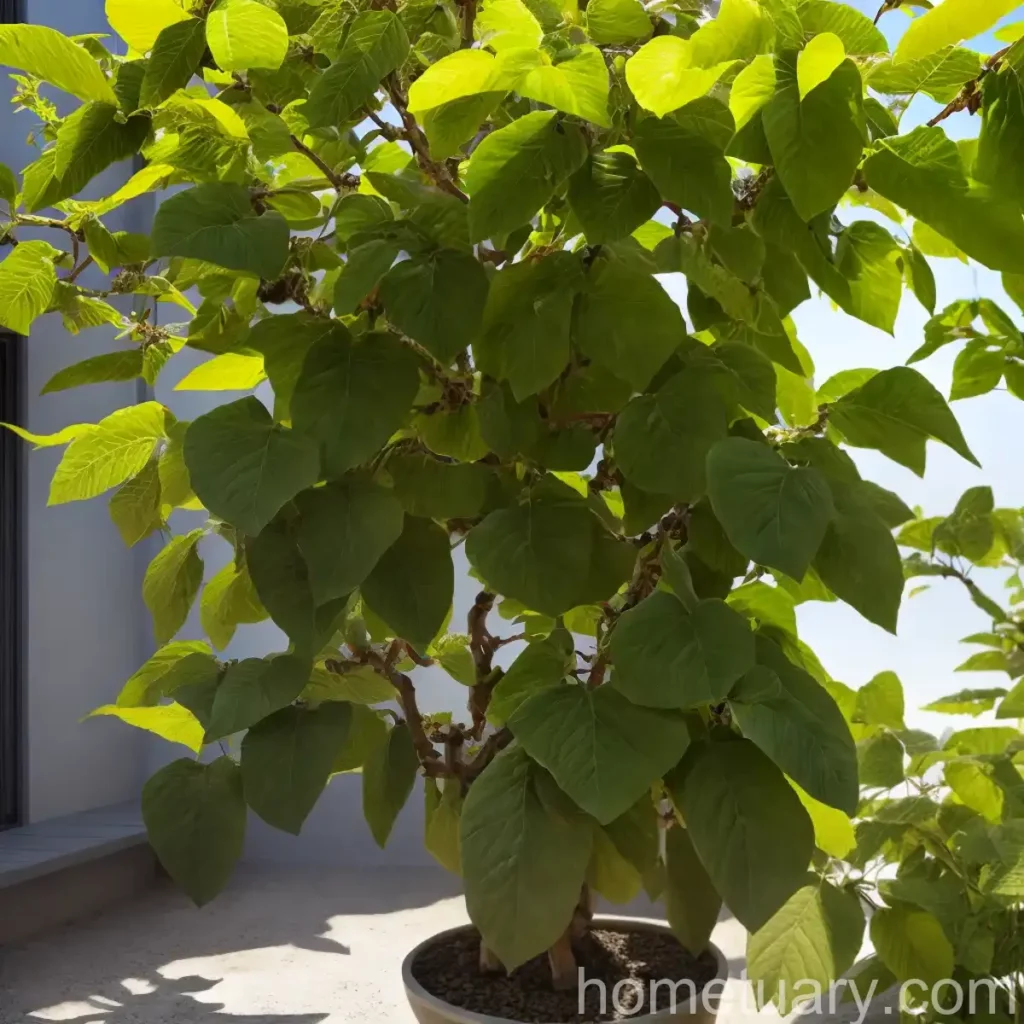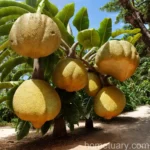The Fascinating Paper Mulberry (Broussonetia papyrifera ‘Golden Shadow’)
In the world of horticulture, the paper mulberry (Broussonetia papyrifera ‘Golden Shadow’) stands out as a striking and versatile plant. Its vibrant foliage and unique growth habit make it a desirable addition to any garden or landscape. This blog post will delve into the culture, uses, care, and interesting facts about the paper mulberry, providing valuable insights for plant enthusiasts and gardening aficionados.
What is the Paper Mulberry (Broussonetia papyrifera ‘Golden Shadow’)?
The paper mulberry, scientifically known as Broussonetia papyrifera ‘Golden Shadow’, is a cultivar of the Broussonetia papyrifera species. It is a deciduous tree that is renowned for its distinctive, scalloped leaves and golden-yellow variegation. This ornamental tree is native to East Asia, including regions of China, Japan, and Korea. The ‘Golden Shadow’ cultivar specifically stands out for its rich, golden hues that adorn its foliage, creating a visually stunning display in any setting.
Key Takeaways – Paper Mulberry (Broussonetia papyrifera ‘Golden Shadow’)
Culture
The paper mulberry is a resilient and adaptable plant that thrives in various climates. Its cultural requirements contribute to its versatility and popularity in landscaping and horticulture.
- USDA Hardiness Zones: Paper mulberries are well-suited to USDA Hardiness Zones 4-10, making them suitable for a wide range of geographic regions.
- Growth Rate: The ‘Golden Shadow’ cultivar typically exhibits a moderate to fast growth rate, allowing for relatively quick establishment and development in the landscape.
- Mature Size: When mature, the paper mulberry can reach heights of 20-40 feet, with a spread of 15-30 feet, providing substantial presence and shade in the outdoor environment.
Uses
The paper mulberry serves multiple purposes, making it a valuable addition to both residential and commercial landscapes.
- Ornamental Appeal: The striking variegated foliage of the ‘Golden Shadow’ cultivar makes it a popular choice for adding visual interest and aesthetic appeal to gardens, parks, and urban landscapes.
- Shade Tree: With its dense foliage and moderate height, the paper mulberry serves as an effective shade tree, offering relief from the sun’s rays during the hot summer months.
- Landscaping Accent: Its vibrant colors and unique leaf shape make the ‘Golden Shadow’ cultivar a favored specimen for adding contrast and texture in landscape designs.
Plant Care
The successful cultivation and maintenance of the paper mulberry rely on a thorough understanding of its specific care needs. By addressing essential elements such as water, sunlight, fertilizer, soil, pruning, and propagation, gardeners can ensure the optimal growth and health of this captivating tree.
Water
Proper watering is crucial for the well-being of the paper mulberry, especially during its establishment phase and in periods of dryness.
- Initial Establishment: Newly planted paper mulberries require regular watering to aid in root establishment. Ample moisture is essential during the first year of growth to promote healthy development.
- Mature Trees: Once established, mature paper mulberry trees are moderately drought-tolerant but benefit from occasional deep watering, particularly during prolonged periods of drought or heat stress.
- Watering Frequency: As a general guideline, provide approximately 1-1.5 inches of water per week, adjusting for variations in soil and weather conditions.
Sunlight
Adequate sunlight is vital for promoting the vigor and vibrant foliage coloration of the paper mulberry.
- Sun Exposure: The ‘Golden Shadow’ cultivar thrives in full sun to partial shade, ideally receiving at least 6-8 hours of direct sunlight per day for optimal growth and leaf variegation.
- Shade Tolerance: While tolerant of some shade, reduced sunlight may diminish the intensity of the golden foliage color, so it is advisable to prioritize a sunny location when planting.
Fertilizer
Strategic fertilization supports the paper mulberry’s nutritional needs and contributes to overall vitality.
- Fertilizer Type: Utilize a balanced, slow-release fertilizer to provide essential nutrients without promoting excessive rapid growth. A 10-10-10 NPK (nitrogen, phosphorus, potassium) ratio fertilizer is suitable for the paper mulberry.
- Application Timing: Apply fertilizer in early spring before new growth emerges to bolster the tree’s resources and support healthy foliage development.
Soil
The selection of suitable soil and maintaining optimal soil conditions are pivotal for the paper mulberry’s long-term health and performance.
- Soil Type: Paper mulberries thrive in well-draining, loamy soils, but they showcase adaptability to various soil types, including sandy and clay soils.
- Soil pH: The ideal soil pH for paper mulberries ranges between 5.5-7.5, which is slightly acidic to neutral, fostering an environment conducive to nutrient uptake and root health.
Pruning
Pruning contributes to the paper mulberry’s overall structure, aesthetics, and health, necessitating proper techniques and timing for favorable results.
- Pruning Objectives: Regular pruning helps maintain a balanced canopy, removes dead or damaged branches, and promotes air circulation within the tree.
- Pruning Time: Conduct routine pruning during late winter or early spring while the tree is dormant, as this minimizes stress and supports vigorous regrowth during the upcoming growing season.
Propagation
The propagation of paper mulberries provides opportunities for expanding their presence and sharing their unique attributes with others.
- Propagation Methods: Paper mulberries can be propagated from seeds, cuttings, or by layering techniques, presenting options for both sexual and asexual reproduction.
- Seed Propagation: Sow fresh seeds in a prepared seedbed or container and maintain proper moisture and warmth to encourage germination and seedling establishment.
Container Popularity
While paper mulberries are often grown as landscape trees, they can also thrive in containers, offering versatility for urban and small-space gardening.
- Container Size: Select large, sturdy containers with ample drainage holes to accommodate the tree’s root system and provide stability.
- Soil Mix: Utilize a well-draining, nutrient-rich potting mix designed for trees or shrubs to support healthy growth when cultivating paper mulberries in containers.
- Placement: Position containers in a location that receives sufficient sunlight and provides ample space for the tree to spread its roots without becoming overcrowded.
Common Diseases
Understanding potential diseases and adopting preventive measures are essential for safeguarding the paper mulberry from common ailments.
Disease Diagnosis
Key indicators of common diseases that affect paper mulberries include:
- Anthracnose: Symptoms include leaf spots, defoliation, and dieback, often exacerbated by prolonged periods of wet, humid weather.
- Powdery Mildew: Infected foliage exhibits a white, powdery coating, and severe cases can lead to leaf distortion and reduced vigor.
- Root Rot: Excessive soil moisture can lead to root rot, characterized by wilting, yellowing foliage, and decline in overall tree health.
Common Pests
Being vigilant for potential pests and implementing integrated pest management strategies are crucial for maintaining the paper mulberry’s well-being.
Pest Identification
Common pests that may affect paper mulberries include:
- Aphids: These small, soft-bodied insects can congregate on young shoots and leaf undersides, sapping plant nutrients and excreting honeydew.
- Scale Insects: Scale insects may appear as raised bumps on branches and leaves, often causing yellowing or wilting of affected plant parts.
Botanist’s Tips
Engaging insights from experienced botanists can offer valuable guidance for the successful cultivation and enjoyment of paper mulberries.
- Variegated Foliage: The striking golden variegation of the ‘Golden Shadow’ cultivar can be accentuated by providing ample sunlight and appropriate soil nutrition.
- Disease Prevention: Implementing proper sanitation, air circulation, and avoiding overhead watering can help mitigate the risk of fungal diseases.
Fun Facts
Uncover intriguing and captivating facts about the paper mulberry that showcase its unique characteristics and enrich its allure in the botanical world.
- Cultural Significance: In some cultures, paper mulberry bark was used to create traditional paper and cloth, highlighting its historical importance.
- Wildlife Support: The fruits of the paper mulberry serve as a valuable food source for various birds and wildlife, enhancing the tree’s ecological significance.
Links to External Resources
Discover additional insights, expert recommendations, and practical guidelines for cultivating and appreciating paper mulberries through these external resources:
- National Gardening Association – Broussonetia papyrifera ‘Golden Shadow’
- Missouri Botanical Garden – Paper Mulberry
- University of Florida IFAS Extension – Paper Mulberry
In conclusion, the paper mulberry (Broussonetia papyrifera ‘Golden Shadow’) stands as a captivating and valuable addition to horticulture, boasting ornamental appeal, versatility, and cultural significance. By understanding and implementing the recommended care practices, enthusiasts can cultivate thriving paper mulberry trees that enrich their outdoor spaces and provide aesthetic delight throughout the seasons. Whether integrated into landscape designs, container gardens, or urban settings, the ‘Golden Shadow’ cultivar offers a remarkable blend of visual allure and botanical intrigue.
Please note that the information provided in this blog post is intended for educational and informational purposes only, and readers are encouraged to consult local gardening experts and resources for tailored guidance based on specific environmental conditions and cultivation goals.















